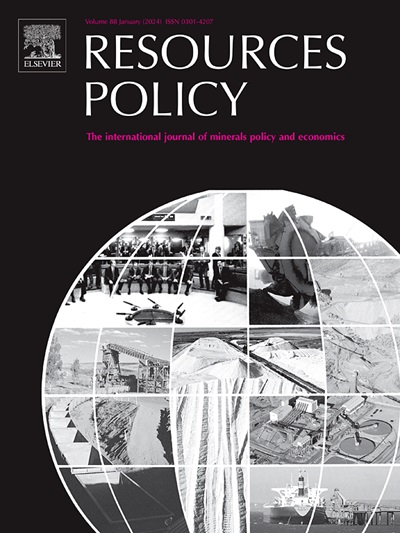Quantile time-frequency connectedness and spillovers among financial stress, cryptocurrencies and commodities
IF 10.2
2区 经济学
0 ENVIRONMENTAL STUDIES
引用次数: 0
Abstract
In this paper, we examine the volatility and time-frequency connectedness among the financial stress index (FSI), cryptocurrencies namely, Bitcoin, Ethereum, Tether, BNB, Solana, and commodities namely, Gold, Silver, Copper, Platinum, and Brent Oil, using the quantile vector autoregressive (QVAR) frequency connectedness, wavelet coherence, and hedging effectiveness techniques, for the period spanning from June 2020 to December 2023. Findings indicate that the spillover effect among FSI, cryptocurrencies, and commodities substantially varies across different volatility conditions. Also, some cryptocurrencies are net receivers of shocks during normal market conditions, while other cryptocurrencies are net transmitters during extreme market conditions. We also find that, during the bullish market, some commodities (Platinum and Brent oil) are net receivers, while other commodities are net transmitters under extreme market conditions (lower quantiles). Similarly, findings further show that, under extreme volatility conditions (higher quantiles), cryptocurrencies and commodities are net receivers of shocks, while FSI is a net transmitter during these volatility conditions. Using frequency co-movement analysis, we find strong and weak correlations between these series in the short- and long-run for shorter periods. Furthermore, findings provide important implications for policymakers and portfolio managers to pay attention to long-term dynamics and design appropriate policies that mitigate the spillover effects.
金融压力、加密货币和大宗商品之间的分位数时频连通性和溢出效应
在本文中,我们研究了金融压力指数(FSI)、加密货币(即比特币、以太坊、Tether、BNB、Solana)和大宗商品(即黄金、白银、铜、铂和布伦特石油)之间的波动性和时频连通性,使用分位向量自回归(QVAR)频率连通性、小波相干性和对冲有效性技术,时间跨度为2020年6月至2023年12月。研究结果表明,FSI、加密货币和大宗商品之间的溢出效应在不同的波动条件下存在很大差异。此外,一些加密货币在正常市场条件下是冲击的净接受者,而其他加密货币在极端市场条件下是净发射器。我们还发现,在牛市期间,一些商品(铂金和布伦特石油)是净接受者,而其他商品在极端市场条件下(较低的分位数)是净发射器。同样,研究结果进一步表明,在极端波动条件下(更高的分位数),加密货币和大宗商品是冲击的净接受者,而FSI在这些波动条件下是净发射器。使用频率共移分析,我们发现这些序列在短期和长期之间存在较强和较弱的相关性。此外,研究结果为政策制定者和投资组合管理者关注长期动态并设计适当的政策以减轻溢出效应提供了重要启示。
本文章由计算机程序翻译,如有差异,请以英文原文为准。
求助全文
约1分钟内获得全文
求助全文
来源期刊

Resources Policy
ENVIRONMENTAL STUDIES-
CiteScore
13.40
自引率
23.50%
发文量
602
审稿时长
69 days
期刊介绍:
Resources Policy is an international journal focused on the economics and policy aspects of mineral and fossil fuel extraction, production, and utilization. It targets individuals in academia, government, and industry. The journal seeks original research submissions analyzing public policy, economics, social science, geography, and finance in the fields of mining, non-fuel minerals, energy minerals, fossil fuels, and metals. Mineral economics topics covered include mineral market analysis, price analysis, project evaluation, mining and sustainable development, mineral resource rents, resource curse, mineral wealth and corruption, mineral taxation and regulation, strategic minerals and their supply, and the impact of mineral development on local communities and indigenous populations. The journal specifically excludes papers with agriculture, forestry, or fisheries as their primary focus.
 求助内容:
求助内容: 应助结果提醒方式:
应助结果提醒方式:


